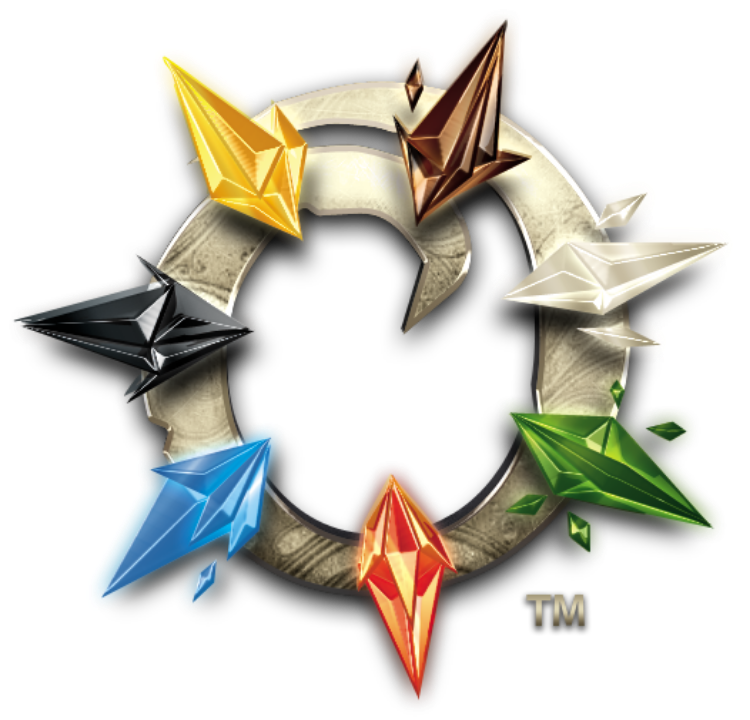Chapter 6: Status Effects
Status Effects:
Many character abilities add Status Effects to the defending character or target. When a status effect has been added to a character, the player adds the corresponding status marker on top of the character card until the status effect is removed (by another ability), or until indicated by the ability used. When a status effect is removed by a character ability, all stacks of the status effect are removed.
[Blind]
When a character with the [Blind] status uses any ability that targets an enemy character or makes a [Standard Attack]; the player must make a successful [On 1-50] roll or the action fails. [Blind] may not be applied more than once.
[Break]
When a [Standard Attack] is made against a character with the [Break] status, the attacking character adds an additional 25 to their CRT value for this attack only. [Break] may not be applied more than once.
[Burn]
Characters with the [Burn] status reduce their HP by 2 at the end of their turn. [Burn] may be applied up to two times.
[Cripple]
When a [Standard Attack] is made against a character with the [Cripple] status, the attacking character adds an additional 1 to their ATK for the attack. [Cripple] may not be applied more than once.
[Freeze]
Characters with the [Freeze] status have 2 tokens placed on them and may not move on their next turn. The following turn, one token is removed and their MV is reduced by 1 for that turn. The next turn, the last token is removed and MV is returned to normal. [Freeze] may not be applied more than once, but it may be reset.
[Poison]
Characters with the [Poison] status reduce their HP by 1 each time they move a space on the battlefield. This happens whether they move on their own or are moved by an opponent’s ability. [Poison] may not be applied more than once.
[Shear]
Characters with the [Shear] status have their CRT reduced by 5 for each application of [Shear] on the character. [Shear] may be applied more than once but CRT may never be lowered below 0%.
[Silence]
Characters with the [Silence] status may not spend any speaking stones.
[Sleep]
Characters with the [Sleep] status may not evade attacks, move or perform a [Standard Attack]/Ability. They may still fuse abilities. [Sleep] is removed if any character does damage to the afflicted character, or at the end of their next turn. Status effect damage does not remove [Sleep].
[Stun]
Characters with the [Stun] status may not target opponents on the character’s next turn. At the end of the character’s next turn [Stun] is removed. Any reactive [Fuse] abilities still activate while a character has [Stun].
[Upkeep]
Characters with the [Upkeep] status have the SC (Spirit Cost/Speaking Stone Cost of Ability) of all of their abilities increased by 1. [Upkeep] does not affect fuses currently in play. [Upkeep] may not be applied more than once.
Evasion and Negation:
Many abilities give characters the chance to evade or negate damage or effects from an incoming attack. When a character has a [Fuse] ability active that gives one of these effects, an evasion or negation token is placed on the character card to indicate that a special dice roll will be taken when that character is attacked.
Evasion:
Evasion can give a character or group of characters the chance to evade incoming attacks. When a character is attacked, the player rolls for an evasion chance. The [Fuse] ability will state the roll value needed for success, and specify the type of damage or effects the character can evade.
Example: [Fuse] Increase Spirit evasion of Oliver by 20. In this example, the character Oliver has a [Fuse] ability that grants him 20 evasion against Spirit based attacks. When Oliver is attacked by a character or target with Spirit damage, the player would need to roll a [On 1-20] to be successful in evading the attack. Evasion chances stack together. If a character has two evasion abilities active the values are combined for the evasion chance roll. Example: One ability gives [On 1-20], and another gives [On 1-30] the total evasion chance for the character is [On 1-50].
Negation:
Negation works the exact same way as evasion, except negation rolls do not stack. If a character has two abilities active that granted negation, the player rolls separately for each negation chance.
Red Cubes are placed on a character card when the character’s attack value has been temporarily increased by an ability. White cubes are placed on a character card to indicate a countdown used by some abilities. Blue Cubes are placed on a character’s dashboard to indicate extra HP above the character’s max HP.















